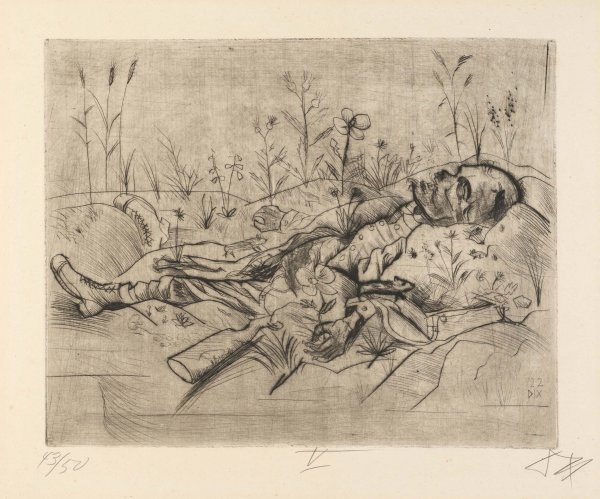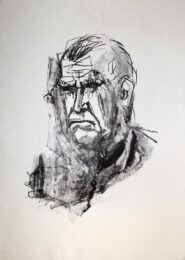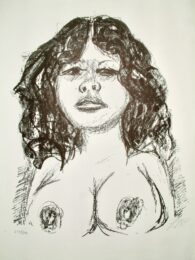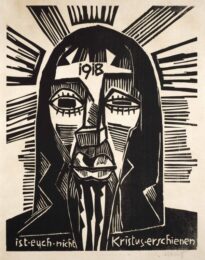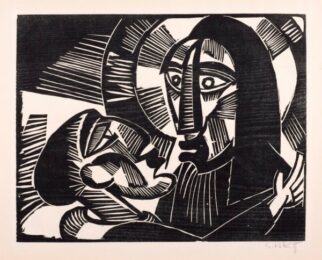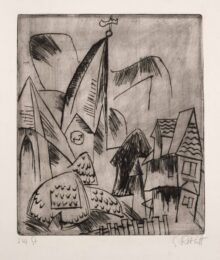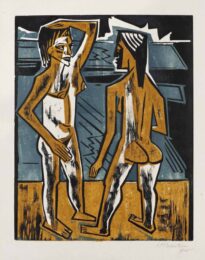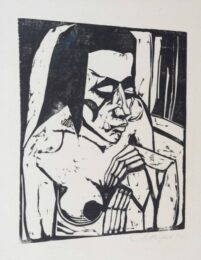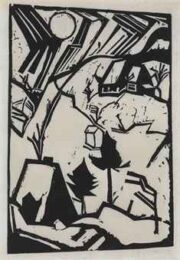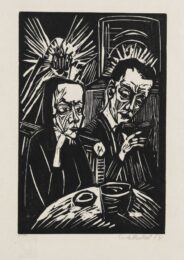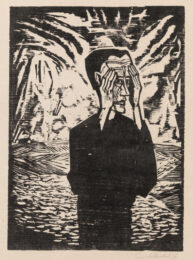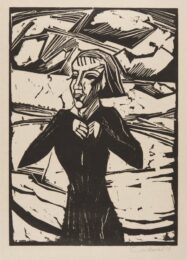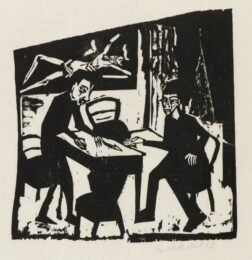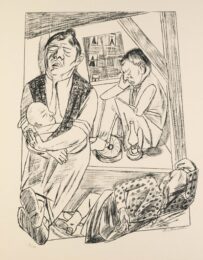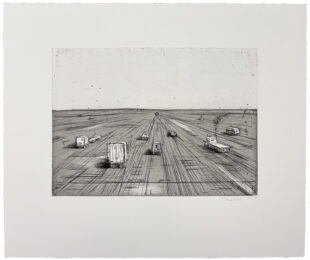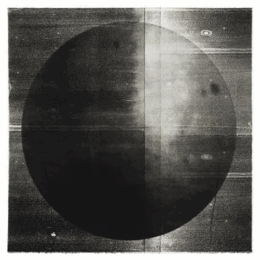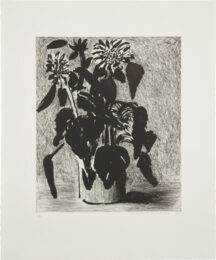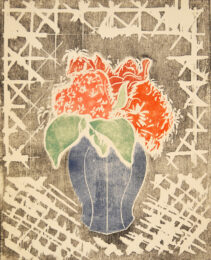Details — Click to read
from the edition of 50 published by the artist in the series of six prints ‘Tod und Auferstehung’ (Death and Resurrection).
Influenced by the Nietzschean concept of eternal recurrence, Tod und Auferstehung reflects the cynicism and resignation of the post First World War period. A poignant reminder of what the German nation had recently experienced and a foretelling of the forthcoming years. The brutal result of the war leaves the soldier dead and decaying, but within this scene there is also animal life, albeit in the form of rodents and insects and a single faintly drawn bird; and abundant grasses are growing and flowers are blooming. The dead soldier even seems to be clutching the flower in the foreground rather than his fallen gun that lies half-buried in the ground.
The series focuses on the human aspect of the war and its aftermath and included the works:
- Der Selbstmörder. – Erhängter (The Suicide)
- Lustmord ( Sex Murder)
- Die Barrikade (The Barricade)
- Schwangerschaft (Pregnacy)
- Toter Soldat (The dead Soldier)
- Begräbnis (Burial)
Although an edition of 50, the prints from this series are relatively scarce. There are no prints from this series in the collections of The Museum of Modern Art, New York, or The British Museum in London. The Museum of Fine Arts, Boston has an example of Barrikade and The National Gallery Washington have an example of Lustmord but internationally examples are rare.
At the onset of World War I Dix volunteered to serve as a machine gunner and suffered serious wounds in front-line advances through Belgium and France. When he returned to Dresden to resume his studies, Dix joined a group of young radical Expressionists and also had contact with Dadaists, whose anarchism encouraged his growing nihilism. Dix’s first intaglio print, the drypoint Strasse dates from 1920. In the lean immediate post-war years Dix, encouraged by his friend Conrad Felixmuller, turned more to printmaking and discovered that intaglio prints were a perfect match for his creative expression. In 1922, encouraged by the important art dealer Johanna Ey, he moved to Dusseldorf to study intaglio techniques with Wilhelm Heberholz, a master of the medium. This was all within a turbulent year in Germany, beginning in January with the sentencing of Hitler following his putsch in Munich, then by the middle of the year with the conflict between the political parties the Foreign Minister Walther Rathenau was assassinated in June. The second half of the year was marked by the terrible inflation and de-valuing of the German currency.
His early series of prints were nearly all published by the progressive Dresdner Verlag, but Dix decided to publish Tod und Auferstehung himself. This may account for their rarity despite their being numbered in an edition of 50.
Further Literature:
Harper Montgomery, in Deborah Wye, Artists and Prints: Masterworks from The Museum of Modern Art, New York: The Museum of Modern Art, 2004, p. 92.

